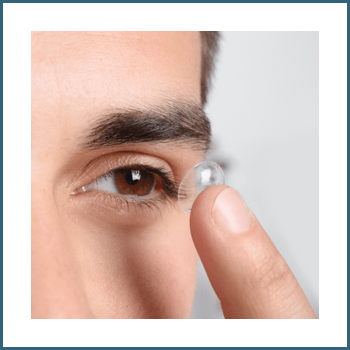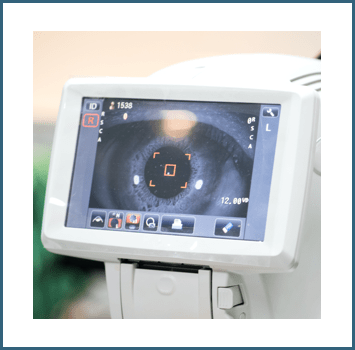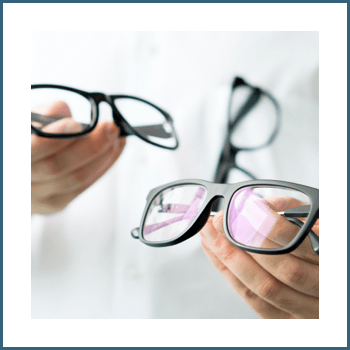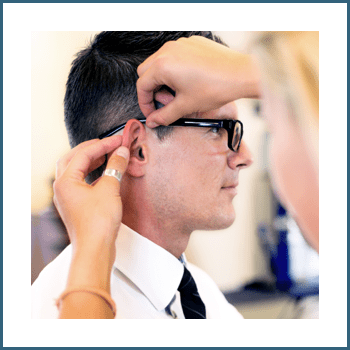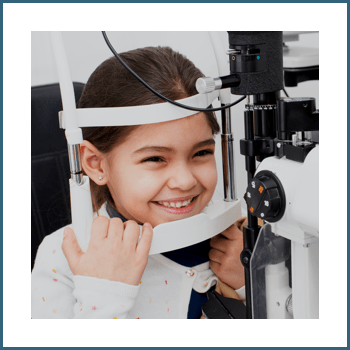What Is Digital Eye Strain?
When we use our phones, laptops, and other digital screens, our eyes work harder to maintain focus. Prolonged use can impact how our eyes feel and how effectively our vision works.
Anyone who uses digital devices can experience some level of digital eye strain. However, when vision problems and eye discomfort persist, digital eye strain can be a serious problem.
Eye discomfort isn’t normal and you shouldn’t ignore it. Any time you experience symptoms affecting your vision or eyes, contact us for an appointment. Evaluating your eye health can help us diagnose the cause and recommend treatment to alleviate symptoms.


Screen Time & Digital Eye Strain
Screen time is increasing. Global internet use increased from 40% to 60% in 2020, and a Western University study found screen time for children increased by 3.2 hours a day. It’s no surprise we spend hours staring at screens for work, school communication, and more, but it can affect our vision and eye health.
Digital eye strain (or computer vision syndrome) can aggravate pre-existing eye problems and can also affect vision in people with normally clear vision. Between 50–90% of computer users are experiencing symptoms, including adults and children.
Digital Eye Strain Symptoms
The condition can cause multiple symptoms, including:
- Dry eye
- Blurred vision
- Double vision
- Excessive blinking
- Eyestrain
- Headaches
- Eye irritation
- Watery eyes
Although digital eye strain symptoms are common, many of the symptoms can be caused by other eye conditions. It’s crucial to have an eye examination to confirm a diagnosis and rule out severe vision problems.
Tips for Reducing Risk
Treatment for digital eye strain can vary depending on your symptoms and unique eye care needs. However, there are some universal tips to help reduce your risk and prevent symptoms from worsening.
When looking at a digital screen, our eyes move more frequently, constantly refocusing on lines or sections of the screen. Screen flickers, glare, or contrast changes also require more eye effort to try to follow the rapidly changing visual information. Screens also change how we blink, affecting our tear film.
You can reduce your risk of digital eye strain by supporting your tear film, taking breaks, and helping your eyes work more efficiently during screen time.
- 20-20-20 rule: Scheduling breaks is easier with a guideline. The 20-20-20 rule recommends taking a 20-second break for every 20 minutes of screen time. You should also look at an object 20 feet away. Changing your eyes’ focus distance allows your eyes to relax completely.
- Screen position: Your screen should be positioned comfortably, approximately an arm’s length away and 20 degrees below eye level.
- Screen colour & contrast: Your eyes need to work harder to see if the screen is too bright or dark, leading to eye strain. When possible, match screen brightness to your surroundings. Your screen isn’t a flashlight; it shouldn’t be lighting up the room!
- Blinking more: On average, we blink 12 times per minute, but only 5 times when looking at a digital screen. Blinking less can increase discomfort and cause dry eye. Blink more frequently! If dry eye persists, consult with our optometrists about eye drops.
- Blue light filter: Your screen emits blue light and blue light keeps you awake! Although staying alert in the morning can be helpful, staring at your phone at bedtime can keep you up. A good night’s sleep is crucial for preventing dry, itchy, or irritated eyes. Put your device in ‘night-time mode’ if you use screens in the evening.
- Screen cleanliness: If your screen is covered in fingerprints, dust, and other particles, your eyes need to work harder to focus on the image underneath. Keep your screens clean to lighten your eyes’ workload.
- Prescription updates: Vision problems like myopia (nearsightedness), hyperopia (farsightedness), and astigmatism, can affect visual comfort while using digital screens. Your lens prescription may need updating, or your lens may not be the best type for the task. Some lenses are designed for computer work. Ask us about your lenses! We may recommend a more comfortable option.
Visit Us for Better Eye Comfort
Digital screens are here to stay. Whether you use your screen time for work or for fun, you can implement tips and treatments to prevent digital eye strain. Westmount Optometrists are here to support your eye health and help you find solutions appropriate for your lifestyle and vision needs.
Contact us today to prevent digital eye strain!

Frames We Love!





Where To Find Us
At the corner of Springbank Drive and Wonderland Road, our clinic offers plenty of parking out front.

Our Address
- 585 Springbank Dr.
- London, ON N6J1H3
Talk to Us
- Phone: 519-472-0210
- Email: [email protected]
Our Hours
- Monday: 8:00 AM – 7:30 PM
- Tuesday: 8:00 AM – 7:30 PM
- Wednesday: 8:00 AM – 7:30 PM
- Thursday: 8:00 AM – 7:30 PM
- Friday: 8:00 AM – 5:00 PM
- Saturday: Closed
- Sunday: Closed
Read Our Blog
What Are Myopia Glasses?
Children’s Eye ExamThese eyeglasses use specially designed lenses that cause light to focus on the eye in a way that slows myopia progression in children.
[…]
Dry Eyes or Allergies: How to Identify the Cause of Your Eye Discomfort
Contact Lenses, Digital Eye Strain, Dry Eye, Eye Care, Eye Exams, Eye HealthThe key difference? Dry eyes are typically caused by poor tear production or when your tears evaporate too quickly, while eye allergies result from your immune system reacting to allergens like pollen or dust. The symptoms may overlap, but the causes—and treatments—are very different.
[…]
How Do You Know if Sunglasses Are Polarized?
SunglassesOne of the easiest ways to determine if your sunglasses are polarized is by using the reflection or screen test. […]
What Are Myopia Glasses?
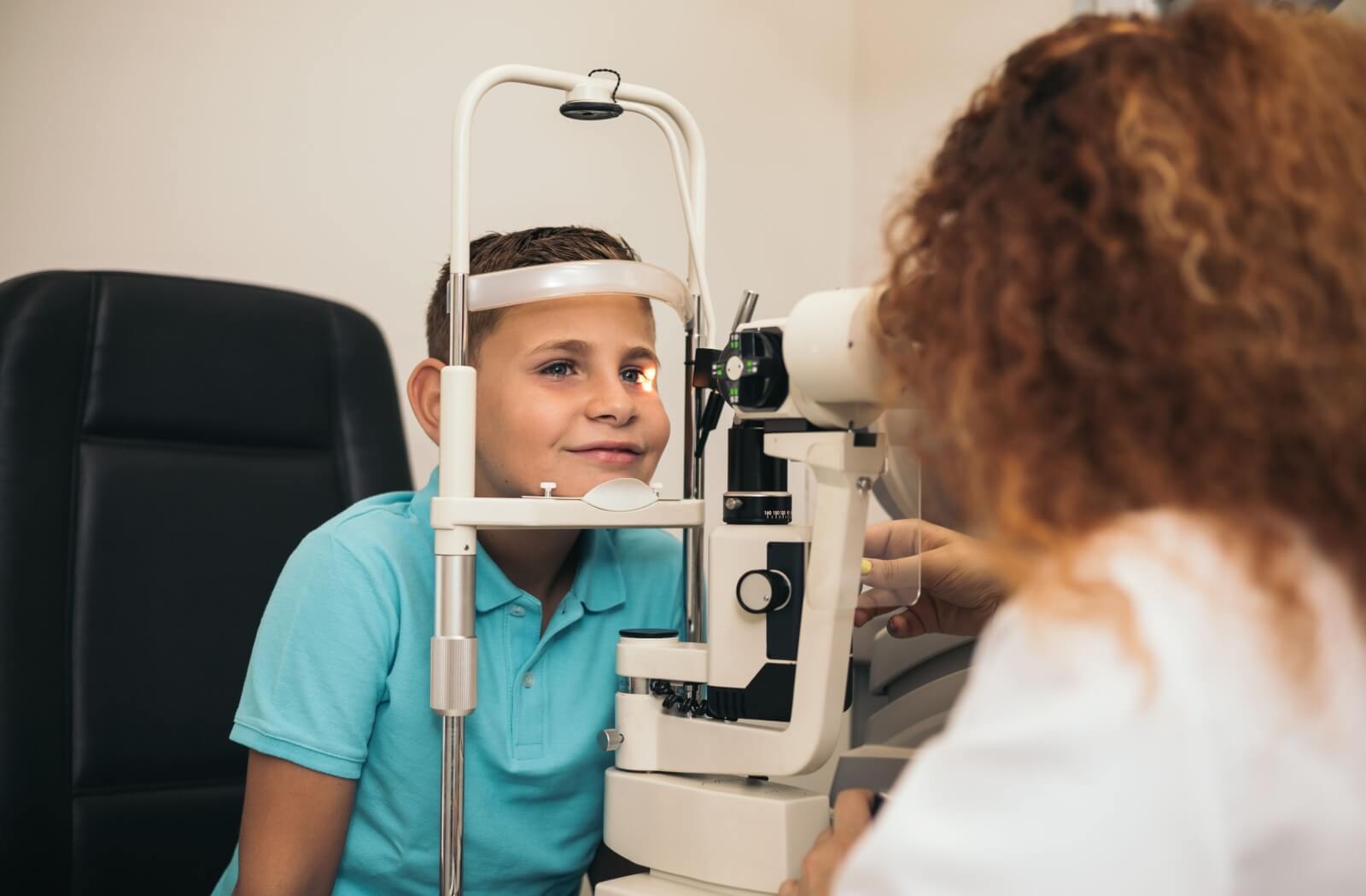
These eyeglasses use specially designed lenses that cause light to focus on the eye in a way that slows myopia progression in children.
[…]
Dry Eyes or Allergies: How to Identify the Cause of Your Eye Discomfort

The key difference? Dry eyes are typically caused by poor tear production or when your tears evaporate too quickly, while eye allergies result from your immune system reacting to allergens like pollen or dust. The symptoms may overlap, but the causes—and treatments—are very different.
[…]
How Do You Know if Sunglasses Are Polarized?

One of the easiest ways to determine if your sunglasses are polarized is by using the reflection or screen test. […]



